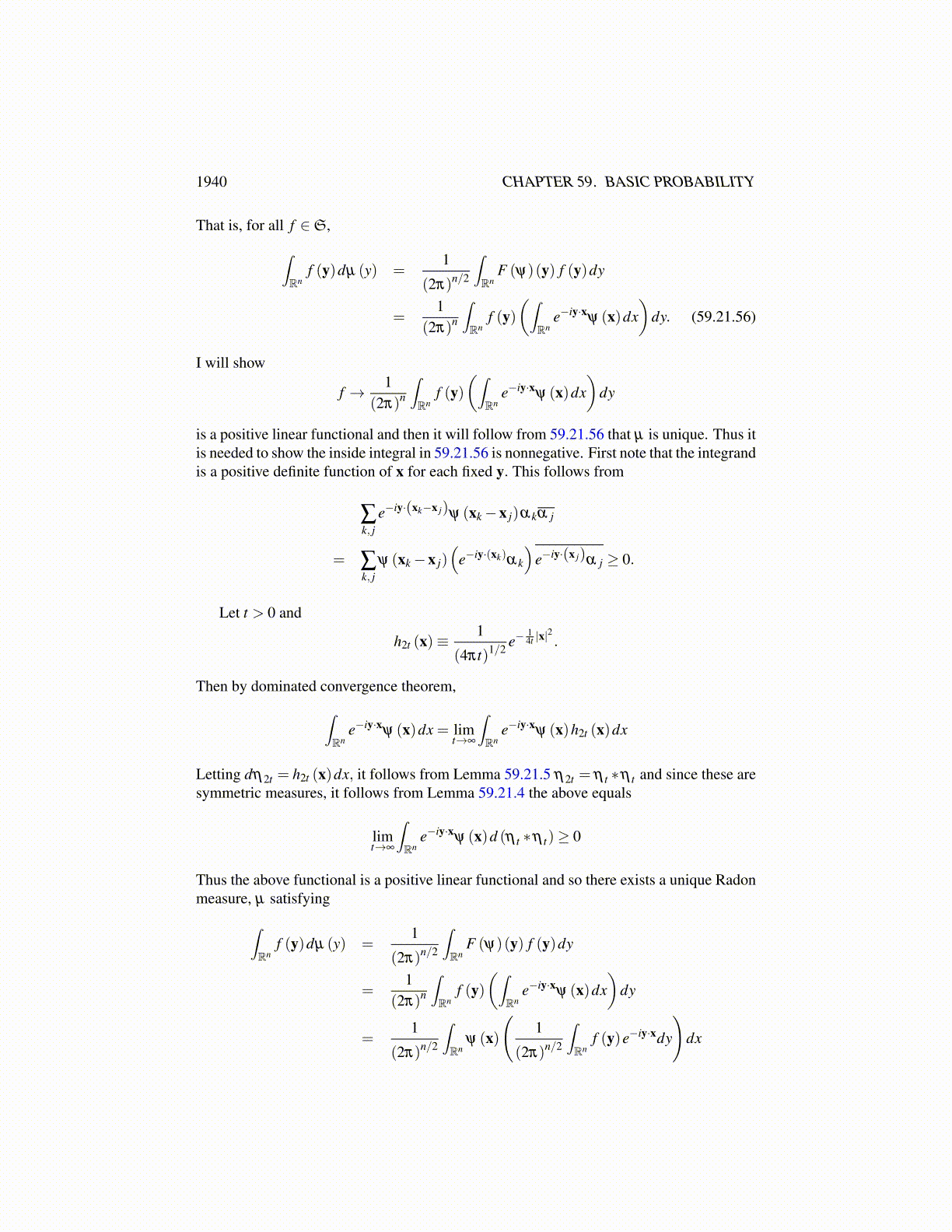
1940 CHAPTER 59. BASIC PROBABILITY
Dividing both sides by p(p−1) and letting p→ ∞, it follows
0≤∫Rn
∫Rn
f (x−y)dµ (x)dµ (y)
which shows 59.21.54.To verify 59.21.55, use 59.14.25.∫
Rnf d (µ ∗µ) =
∫Rn
∫Rn
f (x+y)dµ (x)dµ (y)
and since µ is symmetric, this equals∫Rn
∫Rn
f (x−y)dµ (x)dµ (y)≥ 0
by the first part of the lemma. This proves the lemma.
Lemma 59.21.5 Let µ t be the measure defined on B (Rn) by
µ t (F)≡∫
F
1(√2πt)n e−
12t |x|
2dx
for t > 0. Then µ t ∗µ t = µ2t and each µ t is a probability measure.
Proof: By Theorem 59.14.7,
φ µt∗µt(s) = φ µt
(s)φ µt(s) =
(e−
12 t|s|2
)2= e−
12 (2t)|s|2 = φ µ2t
(s) .
Each µ t is a probability measure because it is the distribution of a normally distributedrandom variable of mean 0 and covariance tI.
Now let µ be a probability measure on B (Rn) .
φ µ (t)≡∫
eit·ydµ (y)
and so by the dominated convergence theorem, φ µ is continuous and also φ µ (0) = 1. Iclaim φ µ is also positive definite. Let α ∈ Cp and {tk}p
k=1 a sequence of points of Rn.Then
∑k, j
φ µ (tk− t j)αkα j = ∑k, j
∫eitk·yαke−it j ·yα jdµ (y)
=∫
∑k, j
eitk·yαkeit j ·yα jdµ (y) .
Now let β (y)≡(eit1·yα1, · · · ,eitp·yα p
)T. Then the above equals
∫(1, · · · ,1)β (y)β
∗ (y)
1...1
dµ